Mo’s Policy Scholar Earns First Lead Academic Author Credit as an Undergrad
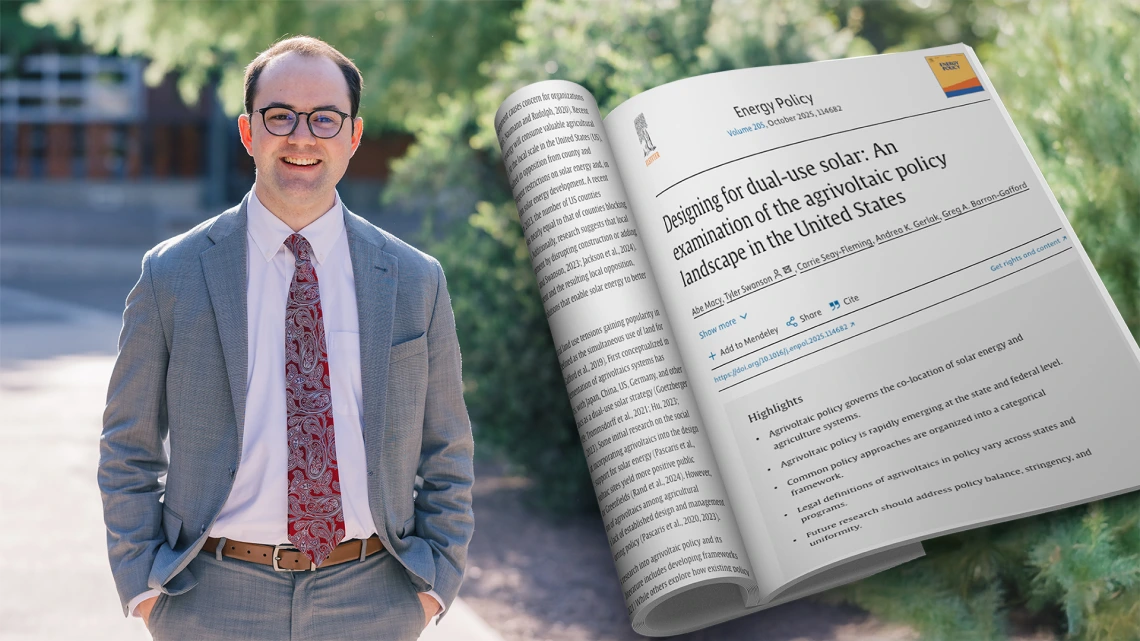
Tucked away on the northwest corner of the University of Arizona campus, the Udall Center for Studies in Public Policy is a non-academic institution whose policy research is recognized internationally.
At any given time, faculty and staff at the Center are engaged in roughly a dozen research projects through its Environmental Policy Program and Native Nations Institute. These projects address key questions related to 1) ensuring that environmental and natural resource policies at all levels of governance are based on sound science and 2) protecting and enhancing the sovereign status of Native nations.
With multiple peer-reviewed papers coming out of the Center each month, the career academics there make the process of publishing research findings look easy. But, for those outside of academia or just entering it, gaining a toehold in the world of professional research can be an intimidating prospect. One Udall Center program is making an effort to change that.
Thanks to the Mo’s policy Scholars Program, which began in the fall of 2023, undergraduate U of A juniors and seniors are now participating in real, active research projects with researchers who are all world-class experts in their fields. It was in this program that 2024 U of A graduate Abe Macy’s research career began.
The Start of Something Good
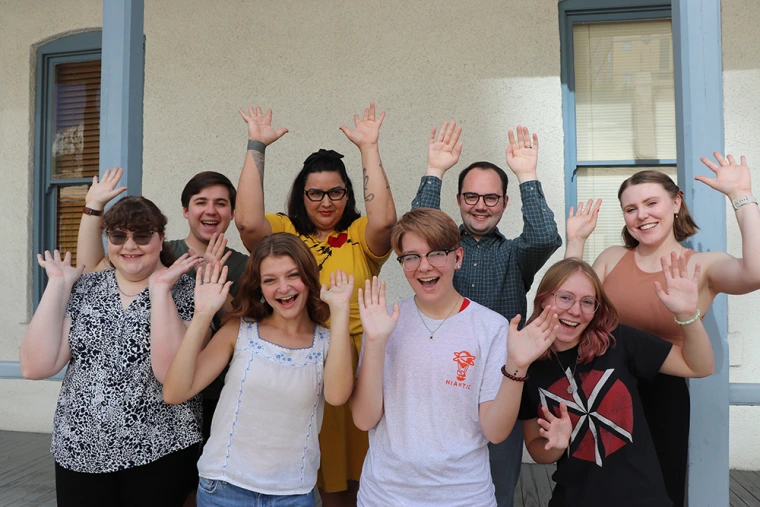
Abe Macy was a member of the inaugural cohort of Mo's Policy Scholars.
Before joining the Mo’s Policy Scholars inaugural cohort, Macy knew he wanted to affect change in the public policy space. He just wasn’t quite sure what that would look like for him yet.
Macy says that the experience of growing up next to a Superfund site, meaning land which requires extreme environmental remediation, in his hometown of Butte, Montana inspired his public policy interest.
“One of the reasons why I wanted to study public policy was I saw this [Superfund site] as an example of policy not accomplishing its main goal,” Macy says.
Macy came across the Mo’s Policy Scholars Program while searching for a way to explore potential career options in the policy space more generally. He applied and was chosen by Udall Center Director and Professor in the School of Geography, Development and Environment Andrea K. Gerlak to work on a project looking at agrivoltaics policies in the US. “Agrivoltaics” refers to the pairing of agriculture and solar energy production on the same plot of land.
“[Macy] showed up, worked hard, and gave it his all,” said Gerlak of her experience working with the up-
and-coming scholar. “I was especially impressed at how Abe was unafraid to enter research spaces where he had no prior experience, but he brought his inquisitive nature and curiosity to the effort.”
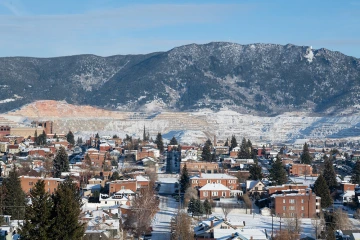
It was this drive and intellect that convinced the research team to make Macy the lead on their policy evaluation effort.
It’s rare for an undergrad to be on the byline of a peer-reviewed research paper, let alone as the lead author. But Macy was undeterred and, once his tenure with the Mo’s Policy Scholars program came to end, he secured an internship with the same research team so he could continue his work into the spring semester.
Dual-Use Solar Today
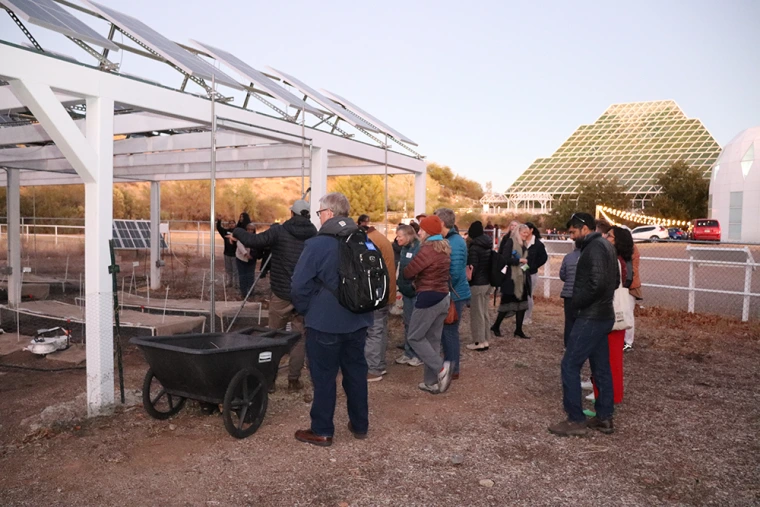
Following its introduction in 1980’s Germany, agrivoltaics has gained popularity in the US in recent years.
Research projects examining the efficacy of agrivoltaics, like those led by U of A Geography Professor Greg Barron-Gafford with support from Gerlak, have demonstrated significant positive benefits of agrivoltaics in terms of both solar and agricultural production.
Despite evidence of this positive impact, wide-scale adoption of agrivoltaics has been limited in the US due to misconceptions by stakeholders and disjointed policymaking.
According to Gerlak, the intention of this project, led by Macy, was to clear up some of this confusion by creating the most inclusive list of existing policy approaches based on state and federal laws, as well as programs designed to facilitate the incorporation of on-farm solar use. The idea was that understanding what is happening in one locale could be crucial to policy development in other locations. Providing a clearer baseline definition and review of current agrivoltaics policies, therefore, could potentially inform a broader uptake or adoption of this novel approach.
The result was a paper titled “Designing for dual-use solar: an examination of the agrivoltaic policy landscape in the US,” which is scheduled for publication in the October issue of the journal Energy Policy.
“This is the first paper to provide a broad brushstroke of the diverse policy approaches underway in the US around agrivoltaics,” said Gerlak of the publication.
Macy led the research effort and created and investigated the parameters used to organize the varying types of policies in place today. According to the research paper, those policies tend to fall into one of four distinct buckets: (1) pollinator-friendly scorecards, (2) use value assessment laws, (3) research funding programs, and (4) feed-in tariff programs. Each area looks different from state to state and even, at times, between municipalities within states.
“There are different definitions between policies,” Macy explains. “So, somebody can place a solar panel on their property next to their farm and, for certain policies, they can get a tax credit related to agrivoltaics. But, in certain states, panels must be placed above the crops to get that tax credit.”
What’s Next?
Macy says this experience has sharpened his focus on urban policy and he has since been admitted to the Master of Public Administration program at the University of Arizona.
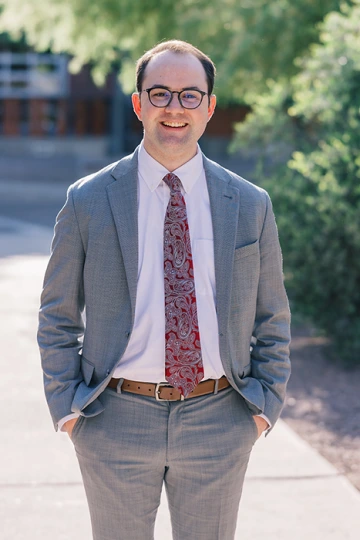
For her part, Gerlak says she is excited to see the Mo’s program continuing to help the next generation of scientists find their footing.
“I continue to be impressed and frankly, surprised, by what I learn from students when conducting research projects,” Gerlak notes of her time working with undergraduate students in the program. “They offer such fresh insights and bring a real collaborative spirit to the work.”
Gerlak went on to express how the Mo’s Policy Scholars Program is becoming a central component of the Center’s efforts to invite more students into the fold of professional research participation, saying that doing so was “at the heart of the Center’s mission.”
Gerlak insists that the program is also a boon to the greater university. She points out that the Mo’s Policy Scholars program is the first effort by the Center to work directly with undergraduates, which is in line with the U of A’s 2025 Strategic Imperatives emphasis of “Success for Every Student” and “Research that Shapes the Future.”
According to Macy, the program turned out to be a lot more beneficial than he’d anticipated. “I was only planning for the one semester and it kind of turned into a bigger thing than I expected,” he says, adding that his resulting publication is now “one of [his] proudest achievements.”
Macy extended gratitude for the “incredible support” he received from everyone involved, with special thanks offered to geography graduate student Tyler Swanson, postdoctoral researcher Carrie Seay-Fleming and Gerlak.
While Macy still isn’t quite sure where he’ll end up professionally, his experience exploring a new side of the policy landscape has broadened his perspective and opened his eyes to a wider set of professional opportunities than he had previously thought possible. And, as for the future of undergraduate scholarship at the U of A, you can be sure that the Udall Center will continue inspiring and mentoring young scholars to explore the myriad possibilities available to them in the world of public policy research.

